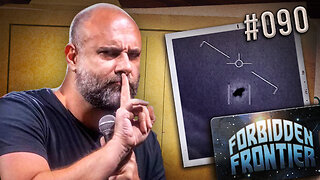Premium Only Content

Lux Radio (1937) A Farewell to Arms (Clark Gable, Josephine Hutchinson)
Plot
On the Italian front during World War I, Lieutenant Frederic Henry, an American architect serving as an officer on an ambulance in the Italian Army, delivers some wounded soldiers to a hospital. While out carousing with his friend, Italian Captain Rinaldi, they are interrupted by a bombing raid. Frederic and English Red Cross nurse Catherine Barkley, who fled from the nurses’ dormitory in her nightclothes, take shelter in the same dark stairwell. The somewhat drunk Frederic makes a poor first impression.
Rinaldi persuades Frederic to go on a double date with him and two nurses, who turn out to be Catherine and her friend Helen Ferguson, or "Fergie". During a concert for officers and nurses, Frederic and Catherine walk into the garden, and Catherine reveals that she had been engaged for eight years to a soldier who was killed in battle. Away by themselves, he tries to kiss her, and she slaps him, but after they talk more, she asks him to kiss her again. In the darkness, he romantically seduces her, over her resistance, and is taken aback and touched to discover she was a virgin. Frederic tells her he loves her.
Lux Radio Theatre was indisputably the biggest, most important, most expensive drama anthology program on radio. It ran from October 14, 1934 until June 7, 1955, then continued on television as Lux Video Theatre until 1957. In all, some 926 episodes were broadcast, providing a record of the most important entertainment events in American theatre and, later, film.
The show was first broadcast on the NBC Blue Network on Sundays at 2:30 PM. The show featured adaptations of successful Broadway plays when it was produced out of New York, such as Seventh Heaven, the first production starring Miriam Hopkins, Smilin' Through, Berkeley Square, Daddy Long Legs, Peg O' My Heart and Way Down East. On July 29, 1935, the show moved to Monday night at 9:00 PM on CBS, where it would stay until June 29, 1954. The show moved to Hollywood on May 25, 1936 with the production of The Legionnaire and the Lady, based on the film Morocco, starring Marlene Dietrich and Clark Gable. The audience for this production was estimated as high as 40 million. The show featured many of the most important films of the period, adapted to fit the 60 minute time slot. Some of the titles for 1939 should indicate the caliber and range of shows: Stage Door, Ceiling Zero, So Big, It Happened One Night, The Lives of a Bengal Lancer, Lady for a Day, The Life of Emile Zola, Tovarich, Only Angels Have Wings, The Prisoner of Zenda, The Awful Truth, Wuthering Heights, You Can't Take It With You, The Old Maid and Goodbye, Mr Chips. For its last season, (1954-1955), the show moved to Tuesday nights at 9 on NBC.
Lux Radio Theatre was always broadcast live, with a studio audience and a full orchestra accompanying the performance and providing musical transitions between scenes. As many film actors were used to numerous takes and not live performance, they sometimes suffered acute stage fright before the show. However, since most received $5,000 for their performance -- in addition to free publicity for upcoming pictures -- actors appeared in their original screen roles if they were available. Indeed, production would halt if necessary, on a film if performers were called to appear on Lux. When the actors were not available, others stepped in. The plays were assembled and rehearsed for a week, in sharp contrast to many other shows, which required a minimal of an actor's time. Regular players for the series included Jim and Marian Jordan, otherwise known as Fibber McGee and Molly. Hosts included Cecil B. DeMille (1936-1945), William Keighley (1945-1952) and Irving Cummings (1952-1955). Directors included Tony Stanford, Frank Woodruff, Fred MacKaye and Earl Ebi.
-
 21:35
21:35
DeVory Darkins
3 days ago $6.89 earnedMitch McConnell TORCHED as Secretary of HHS is sworn in
21.3K95 -
 1:20:04
1:20:04
Tim Pool
4 days agoGame of Money
53.8K10 -
 2:21:11
2:21:11
Nerdrotic
11 hours ago $25.29 earnedDown the Rabbit Hole with Kurt Metzger | Forbidden Frontier #090
104K21 -
 2:41:13
2:41:13
vivafrei
16 hours agoEp. 251: Bogus Social Security Payments? DOGE Lawsduit W's! Maddow Defamation! & MORE! Viva & Barnes
232K262 -
 1:19:23
1:19:23
Josh Pate's College Football Show
9 hours ago $3.88 earnedBig Ten Program Rankings | What Is College Football? | Clemson Rage| Stadiums I Haven’t Experienced
60.7K1 -
 LIVE
LIVE
Vigilant News Network
14 hours agoBombshell Study Reveals Where the COVID Vaccine Deaths Are Hiding | Media Blackout
1,876 watching -
 1:17:59
1:17:59
Sarah Westall
10 hours agoDOGE: Crime & Hysteria bringing the Critics & the Fearful - Plus new CDC/Ukraine Crime w/ Dr Fleming
56.2K3 -
 45:39
45:39
Survive History
16 hours ago $9.19 earnedCould You Survive in the Shield Wall at the Battle of Hastings?
64.4K6 -
 1:50:28
1:50:28
TheDozenPodcast
14 hours agoViolence, Abuse, Jail, Reform: Michael Maisey
101K4 -
 23:01
23:01
Mrgunsngear
1 day ago $5.94 earnedWolfpack Armory AW15 MK5 AR-15 Review 🇺🇸
86.9K12